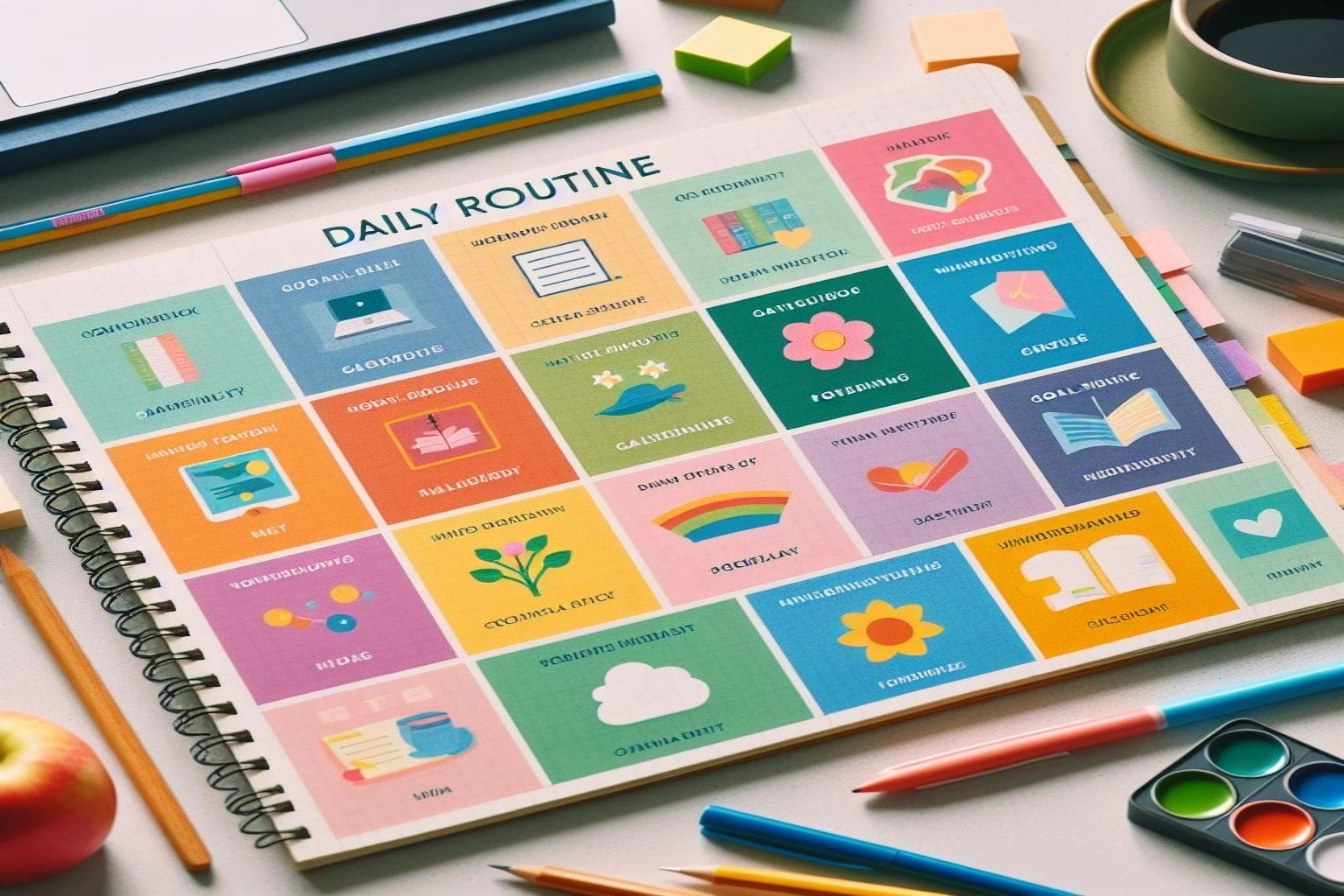
Forming good habits is critical for achieving success and living a healthy, happy life. However, changing behaviors and building new routines can be challenging. James Clear, author of the bestselling book Atomic Habits, has become one of the world’s foremost experts on habit formation.
In this blog post guide, we’ll explore Clear’s key insights on how to build awesome habits and break bad ones.
What Are Habits and Why Are They Important?
Clear defines a habit as “a behavior that has been repeated enough times to become more or less automatic.” Habits allow us to act without constantly thinking and deliberating. Over time, the mind starts to associate certain cues with certain routines.
For instance, in the morning, you probably follow a familiar routine: brushing your teeth, taking a shower, getting dressed, and so on. These actions have become habits, requiring minimal conscious thought.
Habits are important because they shape every aspect of our lives. As Clear states, “Your outcomes in life are a lagging measure of your habits.” Your health, wealth, productivity, and relationships are largely determined by the habits you repeat daily, monthly, and yearly.
Building good habits can transform your life, while bad habits can hinder your full potential. Understanding the science of habit formation is essential for this reason.
The Four Laws of Habit Change
Clear outlines four simple laws for successfully building habits:
1. Make It Obvious
The first law is to make cues for your habit obvious in your environment. The best way to do this is through what Clear calls “environment design.”
To establish a daily flossing habit, place the floss prominently on your bathroom counter instead of storing it in a drawer. When it’s easily visible, you’re more likely to remember and maintain the habit.
You can also leverage technology to make cues more obvious. Apps like Streaks allow you to track habits and set reminders to keep you on track.
2. Make It Attractive
The second law is to make the habit attractive. Our behaviors are significantly influenced by the social groups and environments around us.
Clear uses the term “tribe” to refer to the groups you identify and associate with. When your actions match your tribe’s norms and values, they become appealing and socially encouraged. If they go against the norm, you’re less likely to maintain them.
Therefore, finding a community or tribe that celebrates and reinforces the habits you want to build can go a long way. An online accountability group or a local running club are examples.
3. Make It Easy
The third law is to make the habit easy to perform. The conventional productivity advice is to “work harder” and “grind it out.” But in many cases, successful habit change is actually about making the habit take less effort.
Clear introduces the “Two-Minute Rule” as a simple way to begin. For instance, if you’re hesitant about committing to full 60-minute yoga classes but want to establish a yoga habit, just begin by unrolling your mat for two minutes daily.
Removing friction and minimizing the steps to perform a habit makes it more likely to stick.
4. Make It Satisfying
The fourth law is to make the habit satisfying by tying it to an immediate reward. Our brains are wired to seek pleasure and avoid pain. If a behavior is associated with feeling good right away, it becomes highly reinforcing.
For habits you want to build, attach an immediate reward like listening to your favorite song or enjoying a cup of tea afterward. For habits you want to break, make them unsatisfying by linking punishment or negative feelings.
These four laws create a simple framework for successfully changing habits long-term.
The Downsides of Relying on Motivation and Goals
We often assume motivation and goals are necessary for habit change. You need to really want it and have a clear plan, right? Not necessarily.
Clear explains that motivation and sheer grit can work in the short-term, but are limited when trying to make lasting change. Here’s why:
- Motivation is fleeting: It comes and goes based on emotions, energy levels, etc. Habits, however, stick around for the long haul. Depending on motivation alone is unreliable.
- Goals only provide direction: Having the goal to run a marathon is useful for pointing you in the right direction. But the goal itself doesn’t automatically translate into taking action and sticking to the training habit.
- Goals judge you on your results, not your actions: Goals create an all or nothing mentality. If you set out to lose 30 pounds and only lose 10, you feel like a failure. With habits and systems, any progress is celebrated.
Instead of fixating on goals and motivation, it’s better to focus that energy on building simple habits. The compound effect of those small actions is what leads to big results over time.
How to Break Bad Habits
Now that we’ve covered the fundamentals of building good habits, let’s talk about strategies for breaking bad ones.
Remember, bad habits need to become invisible, unattractive, difficult, and unsatisfying. Here are some effective techniques Clear recommends for making bad habits harder to perform:
- Reduce exposure: Remove junk food from your home so the cue disappears. Unsubscribe from shopping emails that trigger spending urges.
- Reframe your mindset: If you view smoking as something that makes you cool, you have the wrong interpretation. Reframe it as something that makes you weak and harms your health.
- Increase friction: Make bad habits inconvenient. Only allow yourself to watch Netflix on a laptop, not a TV in your bedroom. That way, you have to deliberately walk upstairs if you want to watch.
- Delay temptation: Tell yourself you can smoke a cigarette, but only after you finish a 10 minute walk outside first. Often the urge passes by then.
- Utilize accountability: Share your bad habit you want to break with a friend or community. Knowing others are watching you makes it harder to give in.
Remember, you shouldn’t try to completely eliminate cravings or urges. The focus should be on making the habit unattractive and difficult to perform when those feelings arise.
How Habits Relate to Identity and Willpower
Two other big mental obstacles to habit change are issues with identity and limited willpower. Thankfully, Clear provides solutions to navigating both.
With identity, it helps to realize that your beliefs about yourself will transform to match your habits. As you repeat a small behavior, your self-image starts to shift.
For example, if you practice meditation every morning, you eventually start to see yourself as “a meditator.” Your identity evolves to match your actions.
This positive feedback loop can help reinforce good habits. Once a behavior is part of your identity, it sticks.
Willpower operates in a similar way. Rather than seeing it as a limited resource, Clear recommends focusing on automating habits to conserve willpower. The more actions you can perform automatically because they are ritualized habits, the less daily self-control you’ll burn.
So habits actually end up amplifying your ability to make positive change by aligning your identity and preserving your precious willpower reserves.
Key Takeaways on Habits from James Clear
To wrap up, here are some of the top insights on habit change from James Clear and Atomic Habits:
- Habits are the compound interest that shape our lives. Small improvements accumulate into massive differences over time.
- The four laws of habit change are: make it obvious, attractive, easy, and satisfying. Leverage these principles to build good habits.
- Relying on sheer motivation and goals is an unreliable strategy. Focus instead on automating small behaviors.
- Bad habits must become invisible, unattractive, and difficult in order to overcome them. Increase friction and reduce exposure to cues.
- Shape your identity and preserve willpower by turning positive actions into automated habits.
- Habit change is a lifelong process. Don’t get discouraged by setbacks. Stick with the system and celebrate small wins.
Changing habits takes patience and persistence, but it can absolutely be done. By applying the insights from Atomic Habits and recognizing the incredible power of tiny repeated actions, you put yourself on the path to remarkable results.
What resonated with you most from James Clear’s work? Are there any habits you’re trying to change currently? Share your insights and experiences in the comments below!







